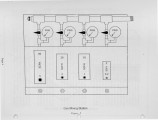| Title |
An Experimental Study of the Effects of Natural Gas Composition Variations on Fan Powered Infrared (PIR) Burners |
| Creator |
Bai, T.; Yeboah, Y. D.; Sampath, R.; Farnsworth, C.; Mocsari, J. |
| Publisher |
University of Utah |
| Date |
1996 |
| Spatial Coverage |
presented at Baltimore, Maryland |
| Abstract |
Natural gas compositions supplied by local gas distribution companies exhibit seasonal and regional variations. These variations cause reliability and performance problems in gas-fired equipment. The objective of the research is to experimentally characterize the effects of fuel gas composition on the operation of fan powered infrared (PIR) burners. The experimental setup consists of a PIR commercial deep fat fryer that was modified to allow in-situ radiation measurements on the surface of the infrared burner via a view-port installed through the oil vat. The performance of the burner was examined for radiant efficiency (ratio of radiative flux escaping the burner to the heat released by combustion), and gaseous emissions at each gas composition and air/fuel ratio. A system 2000 FTIR from Perkin Elmer was used for insitu measurements of the radiant output from the burner. A set of Horiba gas analyzers was used to measure the emissions from the burner. Experiments were conducted for an extensive test matrix of fuel gas mixtures, that represent the complete range of gas compositions usually encountered in the United States. Methane was used as the baseline fuel. Mixtures of methane/propane, methane lhydrogen, and methane/nitrogen a long with propane-air peakshaving gas mixtures were prepared to study sooting, flashback, and lift-off conditions. Test results were obtained for equivalence ratios (stoichiometric air/fuel ratio/actual air/fuel ratio) ranging form 0.4 to 1.4. For any mixture in general, radiant efficiency, CO2 and NOx emissions showed a steady increase up to stoichiometric and decreased through equivalence ratio of 1.4. Unburned hydrocarbon emission continued to increase as equivalence ratio increased from 1. Results indicate that the emissions vary from mixture to mixture. Maximum radiant efficiency of the burner was obtained close to equivalence ratio 1. Results obtained from this study can be useful to develop optimum design guidelines for PIR burner manufacturers. Such guidelines are important for progress in natural gas utilization technologies. |
| Type |
Text |
| Format |
application/pdf |
| Language |
eng |
| Rights |
This material may be protected by copyright. Permission required for use in any form. For further information please contact the American Flame Research Committee. |
| Conversion Specifications |
Original scanned with Canon EOS-1Ds Mark II, 16.7 megapixel digital camera and saved as 400 ppi uncompressed TIFF, 16 bit depth. |
| Scanning Technician |
Cliodhna Davis |
| ARK |
ark:/87278/s6cc138x |
| Setname |
uu_afrc |
| ID |
10313 |
| Reference URL |
https://collections.lib.utah.edu/ark:/87278/s6cc138x |















